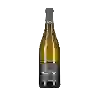
Winery Laurent TherondLa Petite Foulée Blanc de Blanc
This wine generally goes well with
The La Petite Foulée Blanc de Blanc of the Winery Laurent Therond is in the top 0 of wines of Vaucluse.
Details and technical informations about Winery Laurent Therond's La Petite Foulée Blanc de Blanc.
Discover the grape variety: Jacquez
A natural French-American ternary hybrid that most certainly comes from an interspecific crossing between an unknown Vinifera with Vitis Aestivalis and Vitis Cinerea. The Jacquez was at the time the most multiplied in the World, present since always in the Portuguese island of Madeira. For a long time used as a direct producer, it was even used as a rootstock in the south of France, in the United States, in Mexico and in South Africa: some vines grafted on Jacquez still exist today. In France, it is one of the six hybrids prohibited since 1935 (included in European regulations): Clinton, Herbemont, Isabelle, Jacquez, Noah and Othello.
Informations about the Winery Laurent Therond
The Winery Laurent Therond is one of of the world's greatest estates. It offers 3 wines for sale in the of Vaucluse to come and discover on site or to buy online.
The wine region of Vaucluse
The wine region of Vaucluse is located in the region of Méditerranée of Vin de Pays of France. Wineries and vineyards like the Domaine Chêne Bleu or the Domaine Chêne Bleu produce mainly wines red, white and pink. The most planted grape varieties in the region of Vaucluse are Viognier, Merlot and Cabernet-Sauvignon, they are then used in wines in blends or as a single variety. On the nose of Vaucluse often reveals types of flavors of earthy, blueberry or dried herbs and sometimes also flavors of savory, anise or cinnamon.
The wine region of Méditerranée
Méditérranée is a PGI title that covers wines produced in a large area of the South-eastern coast of France, roughly corresponding to the wine region of Provence but also including Part of the Rhône Valley. The PGI shares its territory with multiple AOC appellations as varied as Châteauneuf-du-Pape, Bandol and Côtes de Provence. The PGI Méditérranée catchment area extends over 10 departments (including the two on the island of Corsica), as well as smaller parts of the Isère, Loire and Rhône departments. Viticulture is essential to the culture and economy of this part of France.
The word of the wine: Foxé
An animal odor found in certain reduced or old wines, which are also said to fox, in reference to the fox.






